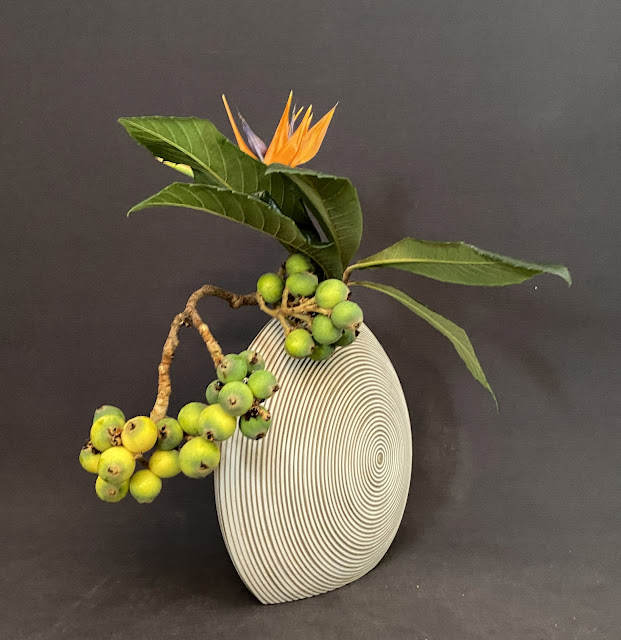Hello all,
Nature never ceases to amaze and delight me. The double headed strelitzia reginae, above, has so much 'attitude', that it only required me to place it in an appropriate container. Admittedly, it did require some skill to have the heavy stem sitting upright without resting on the rim of the container. The single leaf, continues the clean, vertical line.
For Saturday's masterclass, the last for the year, the attendees were given three different types of materials each and were asked to study them carefully for a few minutes before selecting a container from the shelves. They were instructed to use as much or as little of their materials as they wanted.
Vicky had a large weeping willow branch, from which she, painstakingly, removed most of the leaves to reveal the lines of the stems. She used a second container for the agapanthus and roses, which she kept up high emphasizing lines at the base.
Lucy took some pains to place the agapanthus 'just so'. The buds on the agapanthus inflorescence look like tear drops as they hang down in front of the black container. I find this particularly charming. The loquat stem creates the line and the fruit at the back add contrast to colour and form.
At our last, regular class Dianne, very generously, brought a large bucket full of waratah branches with flowers for us all to share. My stem had three flowers and an interesting curve to the stem. I wanted to emphasize the stem so I went searching for complementing branches in the garden and, sure enough, I found it. I was so keen to cut the mahonia and arrange it that I didn't bother getting gloves. For those unfamiliar with this material, it is just about the most prickly one I have ever used. Every tip of the leaves is as sharp as a needle and I have the scratches to prove it. I trimmed all the superfluous leaves from the mahonia, revealing the lovely curve of the stem. Then, when I was done, I went and rubbed antiseptic all over my hands and arms. But, you know what, it was worth it!
Bye for now,
Emily









No comments:
Post a Comment